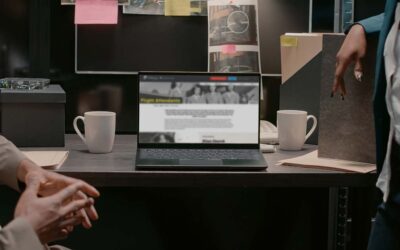The Top 3 Museum Digital Project Strategies That Lead to Success

Rachael Cristine Woody
In our last two posts we’ve learned how to thoughtfully create a successful museum digital project and reviewed the “who, what, when, why, how” of museum digital projects. In this post we’ll conclude the miniseries by delving into three project management strategic areas I consider critical to any successful museum digital project: accountability, communication, and flexibility.
Establish Accountability
The first strategic area critical to the success of your project is accountability. In order to have a culture of accountability there needs to be clear assignment of tasks, an understanding of the timeline and where tasks fit in, and a strong project leader who can encourage (and hold accountable) all team members, themselves included.
Assigned Tasks: As part of the project plan, it’s important to outline who’s responsible, for what task, and when the task should begin and end in relation to the project plan.
Timeline with Milestones: Each project will have an overall timeline and, depending on level of complexity, identified phases with their own micro-timelines. In order to encourage accountability, it helps to outline within the project timeline where tasks will fall and when they’re expected to be completed. Using milestones can help signify to the project team where critical project markers are and help them prioritize the work they’re responsible for.
Make a Practice of Clear and Regular Communication
Another critical element of successful project management is to make a consistent practice of clear and regular communication. Give thought to and seek input on which communication tools may work best for both team communication and workflow management. But no matter what tools you use, there are two practices you can implement:
Communications: How frequently will communications be sent, by whom, and who should be included? For example, the project lead will likely be the central communication hub. Not all communications need to go to all team members and establishing both communication types and flow will help cut down on information overload—which can lead to a risk of people missing important project information meant for them.
Regularly Scheduled Project Check-Ins: Because we all have our own unique communication styles, tools, and preferences; scheduling a regular check-in meeting can help highlight important project information. A regular check-in also helps the project team with accountability of their tasks and getting the information or help they need to complete their tasks successfully.
Embrace and Employ Flexibility
As a field that works with best practices and standards daily through our care and management of collections, it’s important to make sure any project we embark on follows (to the best extent possible) these guidelines. However, the realities we face may necessitate a prioritization of pragmatism over best practice, or an acceptance of “good enough”. Here are some examples:
Where Best Practices Meet Pragmatism: No matter the size of your institution or budget, there can be factors that impact your ability to meet best practice. Sometimes a shortage of funds, a lack of staff, or a tool that can only do so much serve as legitimate hurdles. They key is to stick to best practices and standards whenever possible, but don’t let hurdles stop you from completing a project that helps the museum meet its mission.
Where Perfect Meets “Good Enough”: Best practices and standards aside, our field is full of professionals who hold themselves to very high standards—a happy problem. However, conducting a project perfectly can delay and even derail the project—stopping it from being completed at all. For many museum projects it’s better to have it done than not at all.
Conclusion
You don’t need to be a certified project manager to run a museum digital project successfully. However, being thoughtful about project creation, understanding core project elements, and employing these project management strategies will help you toward successful museum digital project completion.
Additional Reading
The Components of a Successful Digital Project
Museum Digital Project Specifications
What to Do When It’s Your First Museum Digitization Project
5 Prompts to Prioritize Museum Digitization Projects
How to Build Sustainability into Museum Digital Projects
Tip: Go get Margot Note’s free e-book, “Demystifying Archival Projects: 5 Essentials for Success,” courtesy of Lucidea Press: https://lucidea.com/demystifying-archival-projects/

Rachael Cristine Woody
Expert Rachael Cristine Woody advises on museum strategies, collections management, and grant writing for a wide variety of clients. In addition to several titles published by Lucidea Press, Ms. Woody is a regular contributor to the Think Clearly blog. Register here for her upcoming webinar, “How to Create a Successful Museum Digital Project” on August 25, 2021. And learn about Lucidea’s Argus solution for powerful and innovative museum collections management.
Similar Posts
An Introduction to Scrollytelling for Museums
Discover how museums use scrollytelling and digital storytelling platforms to create immersive narratives. This introduction explores key concepts and approaches to interactive storytelling.
Exploring Self-Determinate Multiple Pathways: An Example of Digital Storytelling
Discover how self-determinate multiple pathways offer flexible interactive storytelling in museum exhibits. Learn from the Tenement Museum’s ‘Your Story Our Story.’
Digital Museum Storytelling Example: A Look at Self-Determinate Linear Pathways
Self-determinate characteristics on a linear pathway go beyond brief sidebar topics and instead offer alternative ways to navigate the linear pathway.
Digital Storytelling in Museums: The Prescriptive Linear Pathway in Action
Rachael Woody emphasizes that storytelling is key to engaging audiences with collections. One effective approach? The prescriptive linear pathway—a simple yet powerful method for guiding visitors through digital exhibits.






Leave a Comment
Comments are reviewed and must adhere to our comments policy.
0 Comments